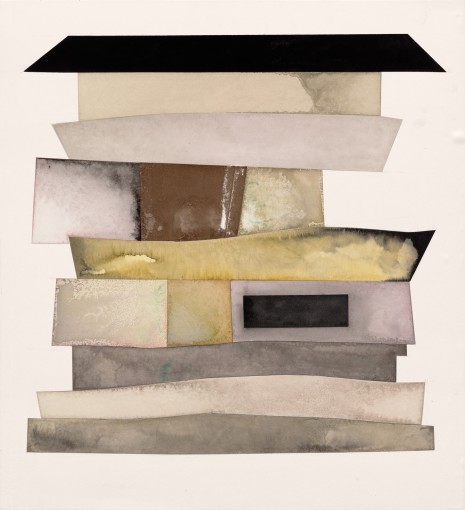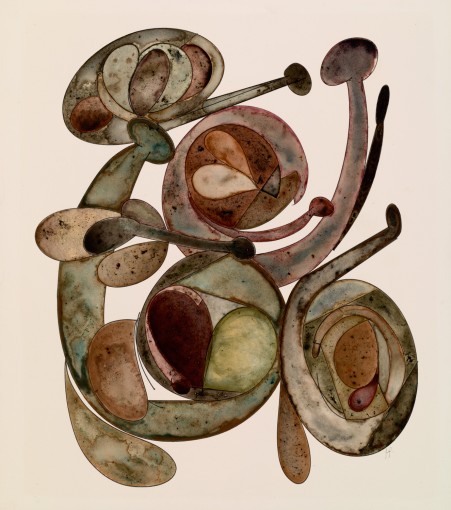Penn’s mixed-media paintings from the late 1980s through the early 2000s highlight the artist’s experimentation with materials, form, and colour. Drawing inspiration from leading 20th century figures such as Henri Matisse, Giorgio Morandi, and Fernand Léger, Penn’s textured, primarily abstract, paintings deviate from the striking style of his photographs yet share in similar techniques and bold character. Penn’s paintings comprise successive layers, resembling collages. In an evolution of his platinum-palladium printing technique for photography, many of Penn’s paintings commenced with the artist creating a drawing in graphite or ink of subjects ranging from mushrooms to mythical creatures, which he would then photograph, enlarge, and print to emphasize his lines’ graphic style. The printed form served as the painting’s design, over which Penn would apply combinations of watercolour, ink, dry colour pigments and gum arabic, sometimes adding sand to achieve greater texture. As this practice evolved in the early 2000s, Penn began to forego the printing step, painting more directly and freely. By surveying the full range of Penn’s painting, the exhibition reveals how his style grew increasingly gestural and fluid over time, embracing all that the medium offers.
Penn embraced the quiet, solitary and physical experience of painting; writing in his memoir Passage: “Pleased with the new freedom, I found inside myself accumulated forms, enjoyed arbitrary colour, the touch of the brush, the flow of pigment, the slowness and privacy.”






